Getting Garden Ready for Fall
September is the gardener’s benchmark for new season, the time for getting garden ready for Fall. Whether you are in the cold reaches of Michigan, or the incessantly warm days of the never-ending Texas summer. Of course, in the north you are better suited to use the entirety of September to your advantage, because the seasons change definitively and without remorse.
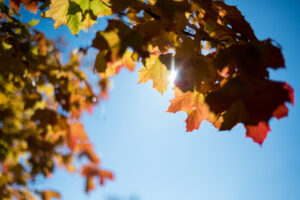
In the South, however, you never quite know when fall will decide to stop by, stay a few days- maybe a week- then decide it needs another month to really get “summer” out of it’s bones just in time for Thanksgiving… perhaps even Christmas. (Yes, I have been sunbathing on Christmas day here in Texas…)
Table of Contents
Getting Garden Ready for Fall, What does that mean?
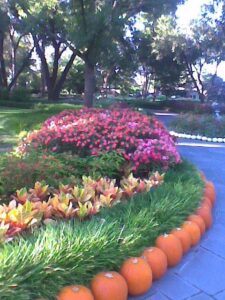 With the uncertainty of Southern summer/fall transitions, I find it best to err on the side of caution and prepare as if Fall is on an actual timetable that you can set your watch by.
With the uncertainty of Southern summer/fall transitions, I find it best to err on the side of caution and prepare as if Fall is on an actual timetable that you can set your watch by.
That way, if you’re right, you have done all that needs to be done, and no worries! If Autumn decides it wants to just sit this year out and wait until next year to arrive at all, you’ve at least gotten a head start on the winter garden prep… so there’s that.
Here is a list of things to check off the list in order to prepare your garden for the fall.
Pull Dead Plants
 With all the gorgeous annuals out there, it’s no wonder we often find ourselves over-estimating our resilience at times when it comes to the wide variety of blooms and foliage available to us.
With all the gorgeous annuals out there, it’s no wonder we often find ourselves over-estimating our resilience at times when it comes to the wide variety of blooms and foliage available to us.
When the dead-heading and pruning becomes overwhelming, there is the inevitable mourning of the dried and withered plants that either did not last the hot dry summer, or were doomed by the incessant return of busy schedules of the return of the school year.
Clearing these dried and dead plants might seem overwhelming at first, but once you get the process started, it is often the case that it was worse in your mind than it was in reality. The typical protection of gloves, longer sleeves and, depending on the situation, protective eyewear are all good tips for the unpredictable melee of wind and woebegone blooms, leaves and seeds.
Remove Diseased Plants and Foliage
 There is always the potential that fall weather has brought highly anticipated rain to your part of the world, but with the rains come the return of many a fungus, pest and disease.
There is always the potential that fall weather has brought highly anticipated rain to your part of the world, but with the rains come the return of many a fungus, pest and disease.
Some of these formerly healthy plants and foliage needs to be trimmed back or completely removed for the overall health of the garden.
Though we loathe to see the fullness of the summer months wane, the cutting back of unhealthy plant parts usually ends up with a second wind of sorts in the mild months of autumn. Even if a plant happens to be one that does not really bounce back until spring, cutting it back in the early fall will give it the needed time to recover and heal before going dormant for the winter only to bounce back beautifully in the spring.
Trim Back Perennials That Have Gone Dormant
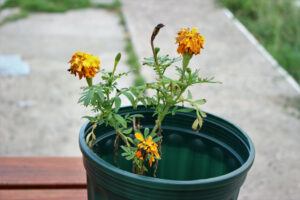 Some Perennials won’t give you a second bloom or even a single new stem of growth during the fall months, but I still recommend looking into the timeframes of your plants to ensure that you aren’t waiting too long (or starting too early) to get your pruning done to ensure your spring growth meets (or hopefully exceeds) your expectations!
Some Perennials won’t give you a second bloom or even a single new stem of growth during the fall months, but I still recommend looking into the timeframes of your plants to ensure that you aren’t waiting too long (or starting too early) to get your pruning done to ensure your spring growth meets (or hopefully exceeds) your expectations!
Divide Perennials
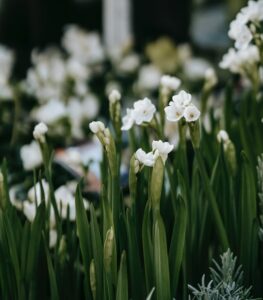 Another option that you might have with some perennials is the option to divide them. Not all perennials do well with division, or are even capable of propagation in that manner.
Another option that you might have with some perennials is the option to divide them. Not all perennials do well with division, or are even capable of propagation in that manner.
If you happen to have one that is ready and capable, however, the early fall is a good time to get this done. This gives the plant more time to heal and re-establish any root systems that might have been damaged or need to grow after the split.
Plant Bulbs for Early Spring
 It happens every spring. I start to see the blooms of early spring pop up and think to myself, “I should have planted some of those last fall!”
It happens every spring. I start to see the blooms of early spring pop up and think to myself, “I should have planted some of those last fall!”
The early bloomers are often the envy of gardeners everywhere, because however much we love witnessing the growth of life in our burgeoning gardens, those early spring blooms make it feel like the waiting isn’t as tedious. Check our your local nursery, garden store or online flower spot right now to grab some good bulbs to help spring arrive early next year!
Stake Young trees, Prepare for Winter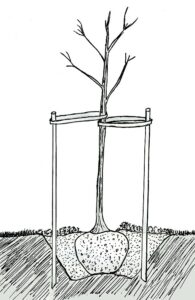
With young trees, prevention is your best friend. Many a young tree has been lost to autumn winds and early winter cold snaps. I, along with many a gardener/farmer swear by the farmer’s almanac. Keeping an eye on your local weather and having the necessary items on hand to prevent fall/winter damage to growing trees can save a lot of heartache and prevent arboreal catastrophe ahead of time.
Turn Soil
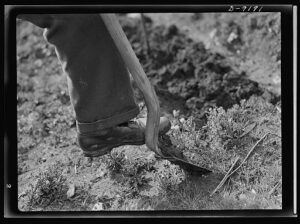 With winter on the horizon, getting a good turn of the soil helps to get the microbes primed and ready for the next growing season before their necessity can lead to disappointment.
With winter on the horizon, getting a good turn of the soil helps to get the microbes primed and ready for the next growing season before their necessity can lead to disappointment.
When left to sit, soil can get stagnant and is a breeding ground for disease, pests and fungus. This can also allow some of those spring and summer seeds from the stray weed or two get exposed to sunlight, only to sprout too late, be easily identified, and pulled before the spring time has a chance to make it a nuisance.
Apply Compost
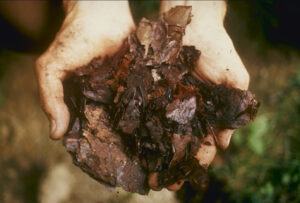 Gardens like to fatten up a bit before the winter months too… it’s not just bears and my waistline. Adding a little compost to your current garden soil in the fall can give perennials that little boost of sustenance to get them through the winter months with a supercharged boost of growth in the spring. Keeping your soil healthy is one of the best ways to keep a low-maintenance garden just that- low maintenance. Make sure you check to see what kind of plants like more acidic soils and which like more alkaline. This can effect the type of compost you use, as well as the frequency.
Gardens like to fatten up a bit before the winter months too… it’s not just bears and my waistline. Adding a little compost to your current garden soil in the fall can give perennials that little boost of sustenance to get them through the winter months with a supercharged boost of growth in the spring. Keeping your soil healthy is one of the best ways to keep a low-maintenance garden just that- low maintenance. Make sure you check to see what kind of plants like more acidic soils and which like more alkaline. This can effect the type of compost you use, as well as the frequency.
Clean/Store Garden Tools and Equipment
 When tools and equipment sit for an extended period of time without being properly cleaned, you can end up pulling them out months later only to find they’ve been ravaged by rust or have become damaged beyond your capacity to repair.
When tools and equipment sit for an extended period of time without being properly cleaned, you can end up pulling them out months later only to find they’ve been ravaged by rust or have become damaged beyond your capacity to repair.
This can be an expensive and frustrating occurrence, and so properly cleaning and storing garden/outdoor tools and equipment is not something you want to overlook. Don’t forget to drain gasoline or other liquids that can turn when left to sit in tanks.
Prepare New Beds for Spring
 It might seem strange to prepare Spring beds in the fall, but allowing the natural decomposition of some good compost and settling of the soil into the beds through autumn and winter can end up giving your spring growth a super-charge, and actually make spring maintenance much easier. For more information and tips on getting a new garden set up, check out our article on Learning How and When to Start Gardening.
It might seem strange to prepare Spring beds in the fall, but allowing the natural decomposition of some good compost and settling of the soil into the beds through autumn and winter can end up giving your spring growth a super-charge, and actually make spring maintenance much easier. For more information and tips on getting a new garden set up, check out our article on Learning How and When to Start Gardening.
Provide Lawns with High Potassium Winterizer
 Winterizing is something that helps to toughen the tissues of the plant in order to help protect from winter freezes.
Winterizing is something that helps to toughen the tissues of the plant in order to help protect from winter freezes.
One of the key methods of protecting your lawn from both freezes as well as annual weed-seed germination, is to ensure you use Potassium, not Nitrogen. (Nitrogen, along with Carbon, are the two key components in good compost.)
Not everyone has or includes their lawn in their gardening routines, but having good info on how to maintain and promote healthy lawns will have a big impact on the overall health of the soil surrounding/near your garden beds. Plus, who doesn’t love the look/feel of a well maintained lawn?
Mow Fallen Leaves (Until Too Thick for Mower)
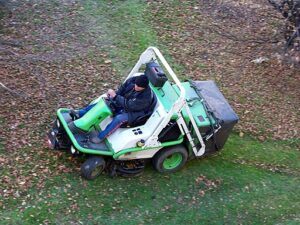 One of the best things for your lawn (and most plants) is good and composted leaf litter. With the breezy days of fall starting to shake loose the first leaves off the trees, simply mowing over them gives the lawn a nice boost right before the dormant months of winter.
One of the best things for your lawn (and most plants) is good and composted leaf litter. With the breezy days of fall starting to shake loose the first leaves off the trees, simply mowing over them gives the lawn a nice boost right before the dormant months of winter.
There comes a time, however, when the leaf cover on the ground makes mowing over them dangerous for your mower. Until then, save yourself the trouble of raking before mowing and just run over that free flying foliage.
Prep New Compost Pile
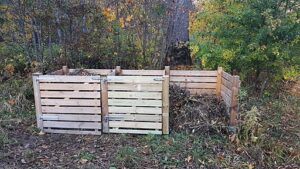 In the early months of Autumn, some gardeners give their garden a good feeding from the compost that has been hard at work breaking down into that black gold during the warm summer months. With the depletion of the compost pile, this can be an opportune time to make use of the relatively empty space of the compost pile, and move it to a new location.
In the early months of Autumn, some gardeners give their garden a good feeding from the compost that has been hard at work breaking down into that black gold during the warm summer months. With the depletion of the compost pile, this can be an opportune time to make use of the relatively empty space of the compost pile, and move it to a new location.
Perhaps your garden has developed over the year and a better location has presented itself. Perhaps the current location just isn’t serving your needs like it used to. Perhaps you just feel like taking advantage of the nutrient-dense ground that has been cultivated over the past year and decide to convert the current spot to a new garden bed. Whatever the reason, moving your compost pile in the fall is, in my opinion, one of the best times.
If you have trees nearby to your new compost location, make sure to put down a tarp or other barrier that will prevent the roots from attempting to grow up into the pile. (This can cause issues later on with the trees.) Otherwise, collecting pesticide/chemical/disease-free bags of leaves from neighbors will give you a head start on getting your new compost pile started. Don’t forget: if you want more info on composting, check out our article on the subject here.
Clean Rain Barrels/Gutters
 For those of us who like to take as much advantage of mother nature’s gifts as possible, rain barrels are a staple of the self-sufficient gardener. The dry summer months tend to make quite a dent in the reservoir set aside for our gardens, and with the low levels, this makes early autumn the perfect time to give them a good cleaning.
For those of us who like to take as much advantage of mother nature’s gifts as possible, rain barrels are a staple of the self-sufficient gardener. The dry summer months tend to make quite a dent in the reservoir set aside for our gardens, and with the low levels, this makes early autumn the perfect time to give them a good cleaning.
Before the fall storms hit, cleaning out the rain barrels and gutters prevents the growth of harmful bacteria and algae that can wreak havoc on your rain-water collection systems, and your garden too, if left unchecked. Giving your system a good scrub at least once a year is the best way to keep it operating properly, and your garden thriving.
Prepare Potted Plants to be Brought Inside for Overwintering
 There is a lot more to over-wintering potted plants than just bringing them inside. There are several things you can do in order to ensure that your container garden not only survives, but thrives through the winter months inside.
There is a lot more to over-wintering potted plants than just bringing them inside. There are several things you can do in order to ensure that your container garden not only survives, but thrives through the winter months inside.
Flushing the soil gets rids of excess buildup of minerals and nutrients that can be damaging to the plants. Container plants that are not exposed to regular rainfall don’t get exposed to the periodic flushing of the soil that keeps that build up in check.
 Flushing the soil can be achieved by doing several watering’s a few mins apart. Removing any diseased or damaged foliage or blooms and then spraying both the top and underside of any remaining healthy foliage with clean, clear and distilled water will help to remove spider mites or other hidden pests before bringing plants inside. Adding mulch will help to reduce the gnat population. (No matter how we try, some gnats are often unavoidable.)
Flushing the soil can be achieved by doing several watering’s a few mins apart. Removing any diseased or damaged foliage or blooms and then spraying both the top and underside of any remaining healthy foliage with clean, clear and distilled water will help to remove spider mites or other hidden pests before bringing plants inside. Adding mulch will help to reduce the gnat population. (No matter how we try, some gnats are often unavoidable.)
Getting Garden Ready for Fall – Conclusion
 No matter if you are preparing for your outdoor garden to endure the elements, or bringing your container garden inside to avoid the perils of winter, following these tips will help to ensure your plants get through the winter.
No matter if you are preparing for your outdoor garden to endure the elements, or bringing your container garden inside to avoid the perils of winter, following these tips will help to ensure your plants get through the winter.
(Your plants aren’t the only thing you have to worry about though, so don’t neglect your soil and your compost pile!) Getting “Garden Ready”: Fall will ensure the winter won’t push all your garden plans back to the bare earth.
Did you like this article? Please share it on your preferred social media platform and help us grow!
Do you want to send me any stories or pictures of the start (and current picture) of your garden?, Send me an email at randi@fairycirclegarden.com
If you have any questions, comments or tips to share with myself or the community, leave a comment below and I’ll get right back to you! You can also reach me on our Facebook and Twitter pages!
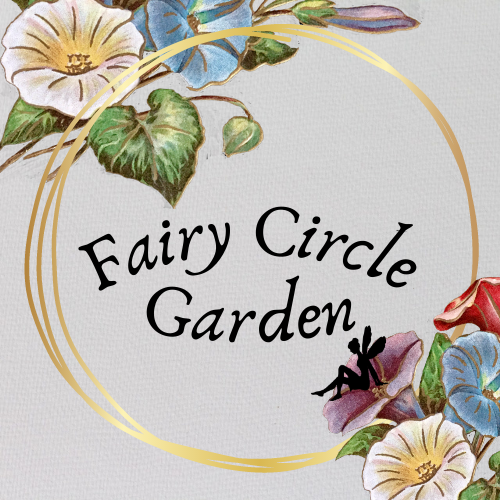
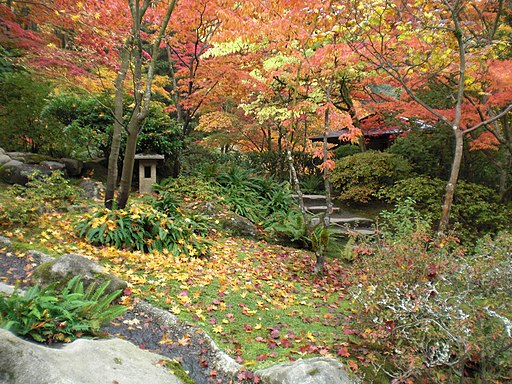
Your article has given me a few extra things to think of for the change in season.
As a new garden enthusiast, I still have so much to learn. My garden has sadly been neglected for too many years as there have always been other priorities.
However, now I have more free time and will turn my attention more to what is outside of my windows.
Thanks for the tips, and I’ll be back to learn more!
Andrew,
Even the most experienced gardener goes through an occasional busy season where the garden gets a little neglected. The good news is that with proper preparation and a bit of planning, the occasional neglect doesn’t necessarily mean the ruination of the whole garden. I am so glad you got some useful tips and look forward to connecting with you in the future!
Hey Randi, thanks for the heads up, unfortunately when the weather gets colder, gardens are often neglected and we let nature take it’s course!
Our garden, though small has been over-looked and in need of attention.
Currently we have an overgrown ivy hedge with tiny yellowish flowers and its inundated with wasps!
We need to trim it, but waiting for them to move on. I suppose the answer is to cut the ivy back and eliminate all the flowering ivy. Do you have any suggestions?
I also moved over to your article on composts and I absolutely agree to make it yourself with veggie peels, fallen leaves and shreddeds paper!
I featured this in a post I did on using shredded paper, as part of your compost list, after all it originally came from wood and can be recycled!
I am big on recycling throw-outs especially to use again in kids crafts.
Keep up the good work, you provide plenty of useful information for us novices?
Thank you so much and I am glad you got so much good info!
When it comes to the ivy, I would first suggest identifying it. There are a lot of different types, and they react differently to pruning. If you are looking to remove the wasps, however, I do think that removal of the ivy itself will help best with preventing the wasps from having a refuge to hide in. I do suggest you seek the help and/or advice of a professional pest control service. I recommend finding one that works with all natural and safe methods, however. Getting a consultation is usually free, but it never hurts to speak with the expert when it comes to things that can bite, sting, or otherwise pose a threat.
Thank you for your kind words on the compost article! It is one of our most popular! We have been composting for only a few years now and I can’t sing it’s praises enough! It cuts back on costs and helps keep our own waste in check too! I’m for sure a big crafter with the kids too! I will have to come check out your site for more holiday craft ideas! Thanks again!
I have been looking for ways to plant my our garden. I have to say that this article was helpful. I didn’t know about pulling out dead plants and disease.
I will bookmark for the future.
I am so glad you found this article helpful! Even I find out new things about my garden every day! Keep up the search for new info!
You got a very nice resource for gardening tips here. I like it ?.
Your article is an inspiration to get out and do all the remaining chores to get the garden ready for both fall and winter.
I haven´t got a garden myself, but I have a very small lawn as well as several plants and flowers in different types of pots, that need attention in preparation for the fall and winter.
I haven´t thought about moving the location of the compost pile at all. But I will do something about it. My parents have a huge garden where the compost pile advice will come to good use.
I will come back for more tips! This has become my new garden knowledge resource!
Roy
Roy, thank you!
You are not alone in needing inspiration, on occasion, to get out and do the things we know we should already have done ?. I find myself frustrated with my own list in that regard more often than I’d like. lol
Every garden is unique, and I love the sound of yours! I am glad you found the compost advice helpful, and I would love to see pictures of the before and after of the moved compost pile!
Please return as often as you like! We are always putting out new articles in the hope that we can help fellow gardeners in whatever way we can!
Thanks so much for this article. It was very inclusive and spot on. I don’t have the issue of figuring out when the plants are going dormant for I live in the north. We have apparent change of seasons here.
One thing I am lazy about is cleaning my tools and properly storing them for the winter. I will get on that this year. Thanks for the reminder!
Nina
Nina,
Yes, I have friends and family that live up north, and they do not often have an issue with figuring out when the plants are going dormant. ?
Here in Texas we often get a brief taste of fall, only for summer to rear it’s head again with a last minute burst of growth before winter arrives late and with gusto. lol
I have learned the hard way that improper care for tools costs a lot! I am glad to be able to help save you the headache and the ache to your wallet! ?
Those are great tips. I live in a desert climate but some tips also apply here. Pruning is a lot of work and it’s a job that has been waiting for me for a while now, but the property is big and I feel a little overwhelmed. I may do it little by little. Planting some bulbs now is definitely a great idea. I already planted a few but will plant more. What are some good seeds and bulbs to plant at this time of the year?
Yes, all the different climates makes a “one-size-fits-all” approach difficult, but I am glad you got some helpful tips from it!
I don’t know specifically where you’re located, but typical early spring bulbs tend to be tulips, daffodils, and hyacinths… several varieties of which do very well in drier climates! Please let me know what you decide to plant and I would love to hear about/see your progress and eventual blooms! Thank you!
Hello from Little Rock, AR! I definitely understand the odd southern weather this time of year. I’ve also been in shorts during December yet right now, I’m sitting bundled up with the heat on because it’s 35 outside!
This is full of great ideas! I have some compost that I was going to save until spring but I might just go ahead and use it on some of my perennials! I’m in my first home so I’m always looking for ideas and info on gardening and yard work to make sure I’m taking care of things the best I can. Thanks for all of the tips!
Hello fellow Southerner! We often take vacation to visit family up in Arkansas, and simply adore it there! Stay warm with this cold weather we have now, though!
Thank you! Congratulations on your first home! I would love to see what you started with and help however I can to help you develop your home and your garden into your own little piece of paradise!!
Thanx for The Info.
I am NOT a Green Finger.
This Article shows Novices Like Me.
That with Certain Planning.
Simple Things can Be Achieved for The Goodness of Gardening.
Planning Ahead
Makes things once Unattainable
Come into Possibility and Fruition
Your capabilities are Incredible
With Forethought and Patience
Fortitude and Consistency
Nature yields it’s Sustenance
It’s Bounty It’s Beauty